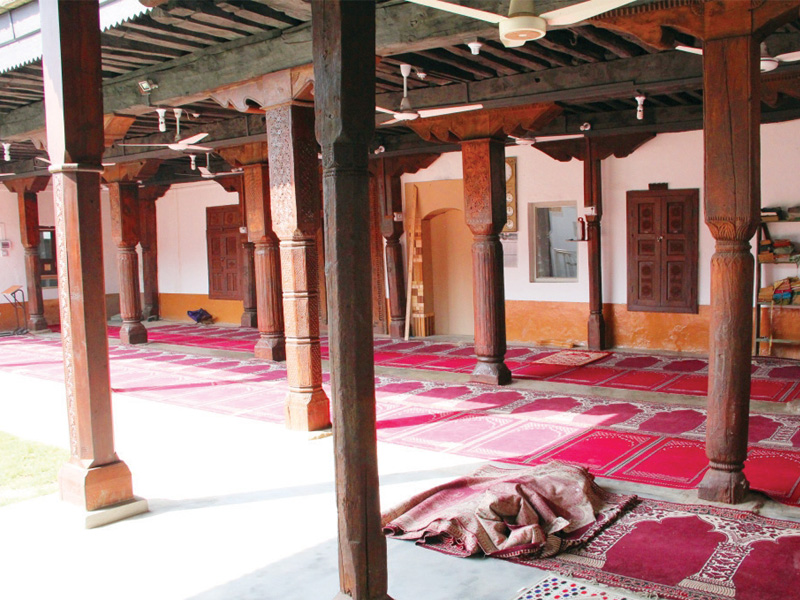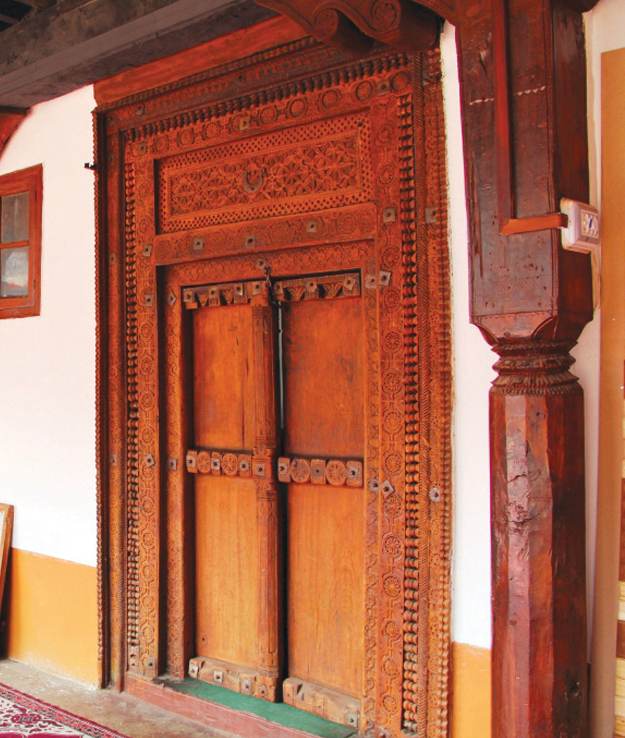
A heritage structure at the heart of Islampur, Swat was pulled back from the brink of destruction and successfully restored. The mosque in the centre of Sapal Bandai is more than just a place of worship; it is a part of collective history as locals believe it was constructed 315 years ago.
The structure also serves as a centre for locals to convene, and spend their free time, tying it to the very roots of community living. The restoration project was funded by the Prince Claus Fund for Culture and Development and was completed by Shaukat Associates under the guidance of Swat Participatory Council (SPC) conservation consultant Sameta Ahmed, an architect and conservationist.

Constructed by the Dhaiji method, the mosque is claimed to be earthquake resistant. PHOTO: EXPRESS
The mosque is constructed using a method – traditional to Northern Pakistan and Kashmir – known as Dhajji. Considered earthquake resistant, the method employs timber, mud and stone. The building reflects Swati and South Asian vernacular architecture.
According to the Prince Claus Fund, the mosque possibly dates back to 1889 though locals claim it is at least 300 years old. It has served as a community space for meetings and religious activities to generations now, a permanent feature in local memory. The dire need for repairs remained ignored and the structure continued to dilapidate till its recent restoration.
The repairs included work on the damaged columns, and masonry. The original wooden hand carvings on the columns and doors of the mosque have also been restored.
“The ancient wood carving used in the mosque is of high class which cannot be found these days. I have, personally, tried not to touch the original masterpieces but only replicate some parts which had been damaged or destroyed,” said Akhtar Munir who was hired for the renovation of the woodwork.
“This is the first initiative ever to conserve traditional Pukhtun architecture in Swat and Malakand. It was made possible by the overwhelming participation and support of locals,” SPC executive director Mohammad Roshan told The Express Tribune.

“Apart from offering my prayers there, I find great serenity in the mosque,” Pardul Khan, a villager, told The Express Tribune.
Aziz Khan, a village elder, confirmed their records hold the mosque to be 315 years old. “It has seen expansion from time to time, but the villagers have always kept its original form. The specialty of the mosque is in the style of its woodwork and hand carvings.”
Many people approached locals and offered to construct a new mosque in exchange for the valuable wooden beams, pillars and doors, but were always turned down.
“This (mosque) was entrusted to us by our forefathers and we are determined to leave it to our future generations,” he said.
The conservation effort has been highly appreciated by culture experts who have asked the government and non government organisations to take steps towards the conservation of old heritage buildings and other monuments in the Swat Valley.
Published in The Express Tribune, October 4th, 2013.
COMMENTS (1)
Comments are moderated and generally will be posted if they are on-topic and not abusive.
For more information, please see our Comments FAQ
1732503274-0/Untitled-design-(43)1732503274-0-405x300.webp)
1732501636-0/Untitled-design-(42)1732501636-0-165x106.webp)

1732498967-0/Outer-Banks--(1)1732498967-0-165x106.webp)
1732086766-0/BeFunky-collage-(74)1732086766-0-165x106.webp)






At least something to read without bloodshed, killings and hatred.